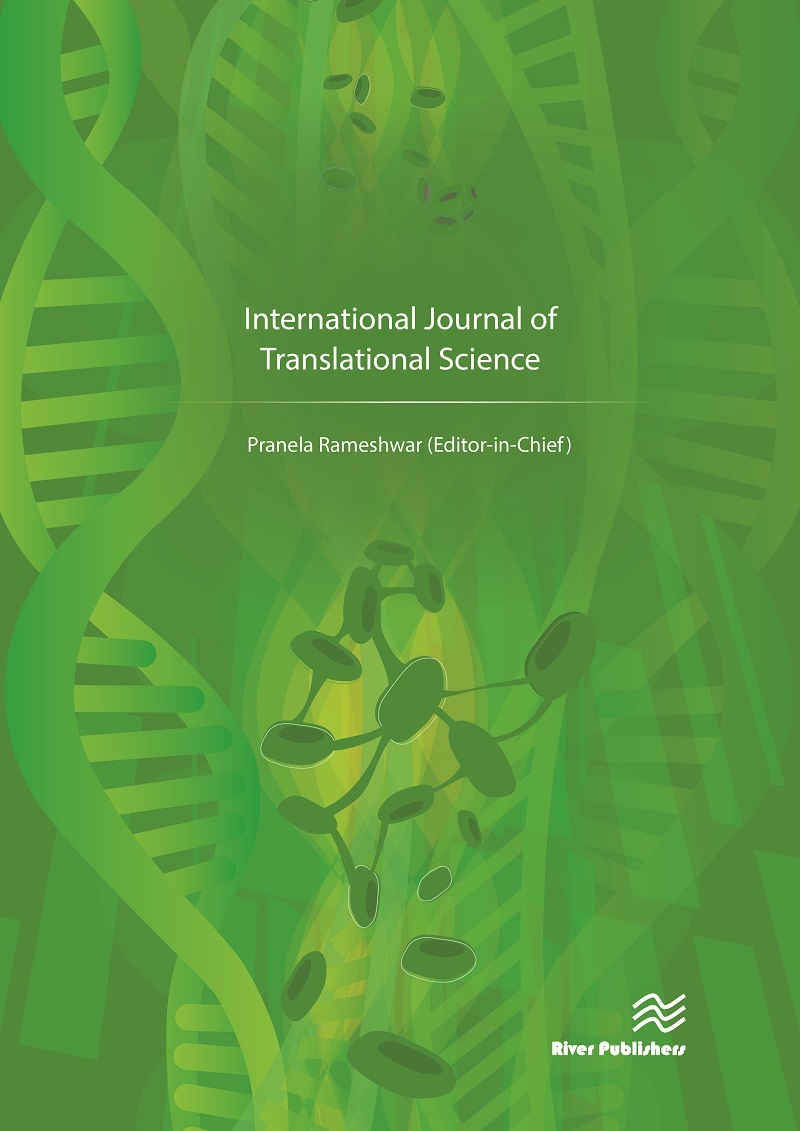Levels of Stromal Derived Factor-1 (SDF-1) and Brain Derived Neurotropic Factor (BDNF) and Very Small Embryonic-Like Cells (VSEL) in Ischemic Stroke Patients
DOI:
https://doi.org/10.13052/ijts2246-8765.2016.004Keywords:
SDF-1, BDNF, VSEL, Ischaemic strokeAbstract
Ischemic stroke remains a major health problem associated with high mortality and severe morbidity. The challenge of treatment is to understand the process leading to endogenous neurorepair mechanism to ischemic stroke. This study tested the hypothesis that VSEL, SDF-1 and BDNF have important roles in the process endogenous neurorepair in response to ischemic stroke. Studies indicated an increase in SDF-1 and VSEL within one week of stroke. BDNF levels tapered after day 15. Together the studies indicated that BDNF levels were highest when measured within 7 days of stroke onset and decreased thereafter. SDF-1 and VSEL were highest at between 7 and 15 days of stroke onset. The findings indicated that SDF-1 could be key for VSEL to be mobilized as a natural repair process whereas BDNF might be the correlative response to prevent cell death.
Downloads
References
Benatar M. 2005. Heparin use in acute ischaemic stroke: does evidence change practice? Q J Med. 98: 147–152.
Kementerian Kesehatan Republik Indonesia. 2014. Laporan Riset Kesehatan Dasar (RISKESDAS) 2013.
Netelenbos T., Zuijderduijn S., van den Born J., Kessler F. L., ZweegmanS., Huijgens P. C., et al. 2002. Proteoglycans guide SDF-1 induced migration of hematopoietic progenitor cells. J. Leukocyte Biol. 72: 353–362.
Kim, C. H., and Broxmeyer, H. E. 1998. In vitro behavior of hematopoietic progenitor cells under the influence of chemoattractants: stromal cell-derived factor-1, steel factor, and the bone marrow environment. Blood 9: 100–110.
Siegenthaler J. A., and Pleasure S. J. 2010. There’s no place like home for neural stem cell. Cell Stem Cell 7: 141–143.
Castellanos M., Sobrino T., and Castillo J. 2006. Evolving paradigms for neuroprotection: molecular identification of ischemic penumbra. Cerebrivasc. Dis. 21(suppl 2): 71–79.
Kucia M. J., Wysoczynski M., Wu W., Zuba-Surma E. K., Ratajczak J., and Ratajczak M. Z. 2008. Evidence that very small embryonic-like stem cells are mobilized into peripheral blood. Stemcells 26: 2083–2092.
Paczkowska E., Kucia M., Koziarska D., Halasa M., Safranow K., et al. 2009. Clinical evidence that very small embryonic-like stem cells are mobilized into peripheral blood in patients after stroke. Stroke 40: 1237– 1244.
Mattson M. P., Maudsley S., and Martin B. 2004. BDNF and 5-HT: a dynamic duo in age-related neuronal plasticity and neurodegenerative disorders. Trends Neurosci. 27: 589–594.
Schabitz W.-R., Steigleder T., Cooper-Kuhn C. M., Schwab S., Sommer C., Schneider A., and Kuhn G. 2007. Intravenous brain-derived neurotrophic factor enhances poststroke sensorimotor recovery and stimulates neurogenesis. Stroke 38: 2165–2172.
Ratajczak M., Zuba-Surma E. K., Ratajczak J., Wysoczynski M., and Kucia M. 2008. Very small embryonic like (VSEL) stem cells – characterization, developental origin and biological significance. Exp. Hematol. 36: 742–751.
Ceradini D. J., Kulkarni A. R., Callaghan M. J., Tepper O. M., BastidasN., Kleinman M. E., Capla J. M., Galiano R. D., Levine J. P., and Gurtner G. C. 2004. Progenitor cell trafficking is regulated by hypoxic gradients through HIF-1 induction of SDF-1. Nat. Med. 10: 858–864.
Kucia M., Zhang Y. P., Reca R., Wysoczynski M., Machalinski B., MajkaM., Ildstad S. T., Ratajczak J., Shields C. B., and Ratajczak M. Z. 2006. Cells enriched in markers of neural tissue-committed stem cells reside in the bone marrow and are mobilized into peripheral blood following stroke. Leukemia 20: 18–28.
Ploughman M., Windle V., MacLellan C. L., White N., Dore J. J., and Corbett D. 2009. Brain-derived neurotrophic factor contributes to recovery of skilled reacjing after focal ischemic in rats. Stroke 40: 1490–1495.



